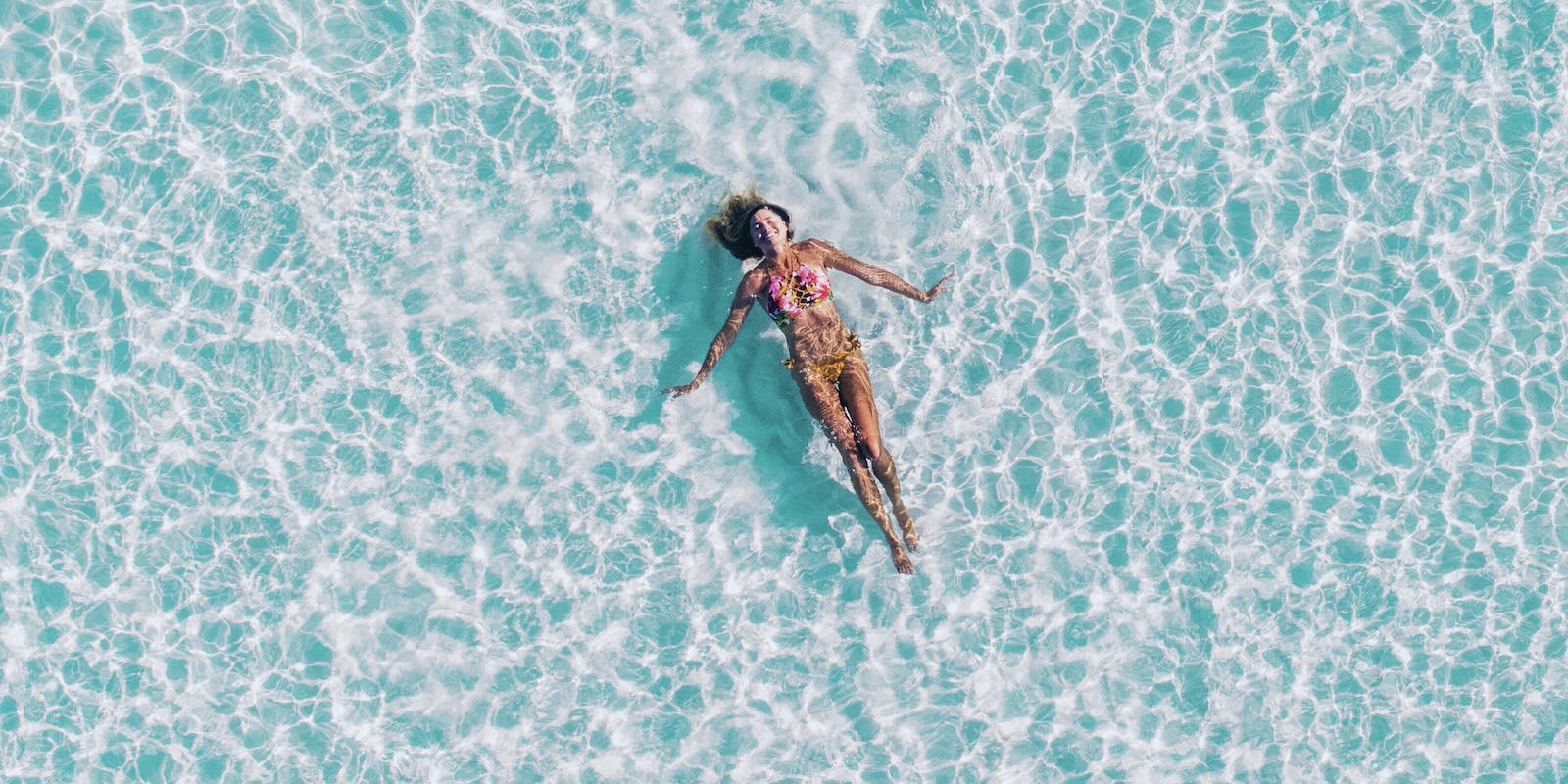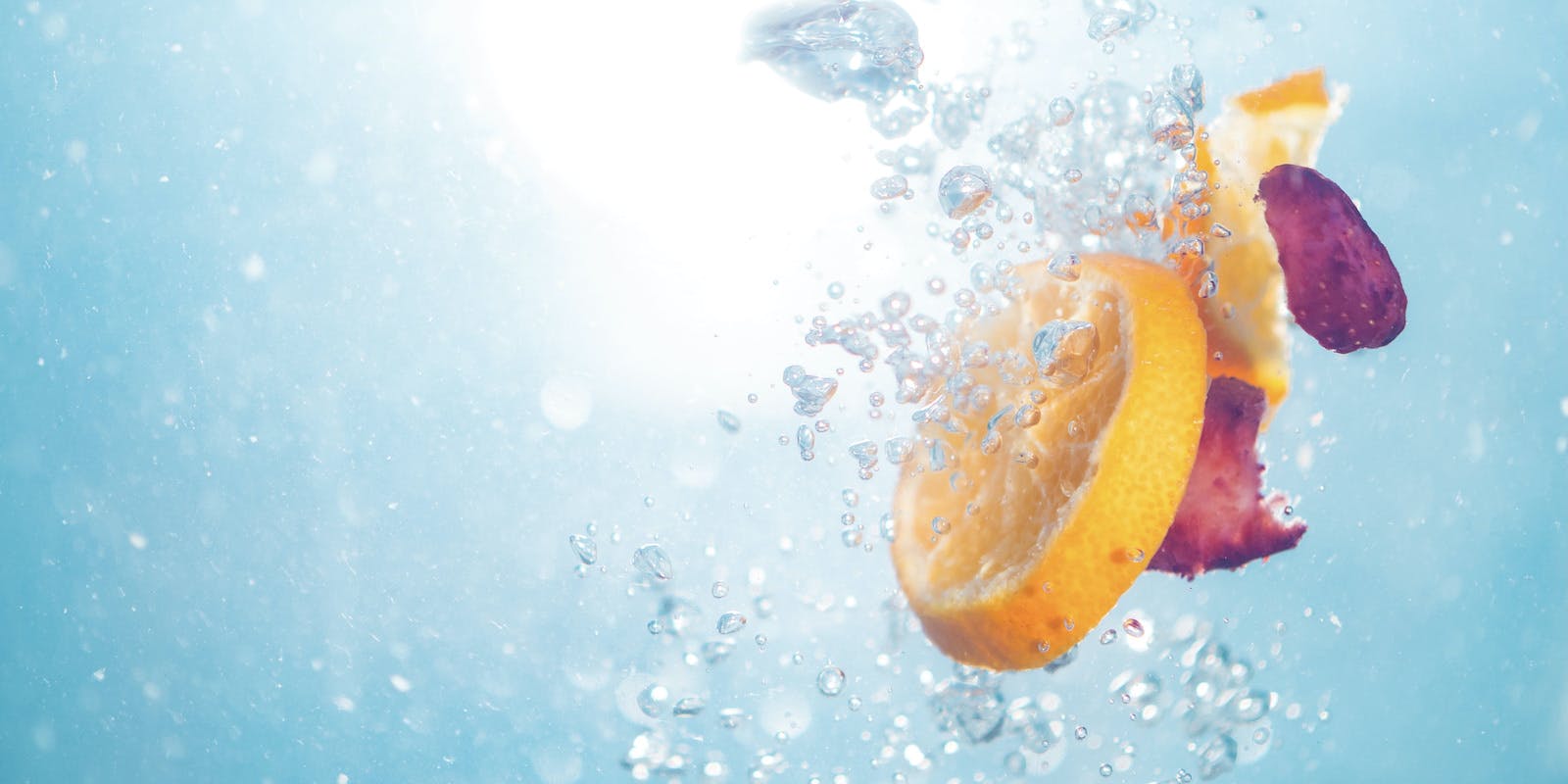Here's how to stay healthfully hydrated

Topics
Welcome to the Dr. B Weekly Roundup, a curated weekly overview that cuts through the noise to deliver vetted reads on Covid-19 and beyond. This summer is a scorcher. And so we want to make sure you’re up to date with tricks to keep cool + nourished. One major player in the game? Salt! Keep scrolling + let’s make a big cannonball splash into…
- The Checkup: summer safety + mental health updates
- Stay Salty: hydration 101 + flotation tips + to-go quenchers
- Covid-19: origin stories + jab updates + a rebound alert
The Check-Up:
- You still need to tell if you get Covid. Here’s how
- Should you drink water before sleep?
- Watch out for sneaky dehydrating foods
- How to ease anxiety with rejection therapy
- Been sued by a nursing home? You’re not alone
- Stop the stigma + calculate risk of getting monkeypox
- Refresh your approach to healthy boundaries
- How to physically + mentally prepare for an abortion
- Parechovirus is up in babies. Here’s what to know
- Keep your vagina healthy during bathing suit season!
Healthy hydration

Think you know how much water to drink for optimum hydration? Think again! Many of us have been told to drink at least 8 glasses daily. But studies behind healthy hydration are… limited. Why? It’s difficult to formulate controls when bodies, diets and activity levels are so diverse.
What does salt have to do with it?
Salt is a compound of about 40% sodium and 60% chloride—two vital nutrients. They maintain the volume of plasma in our blood, which is necessary for cardiovascular function and fluid balance. And they help neurons within our nervous system communicate so that we know how to react in various situations. Without enough salt, our brain can swell, our heart can fail and our nervous system stresses out.
Healthy bodies can generally handle a range of salt we get through whole foods + the little we shake on because a steroid secreted by the adrenal glands (aldosterone) keeps our water and electrolytes balanced + our kidneys flush out the excess. Yet we’re often warned that higher sodium intake causes high blood pressure, heart disease and stroke.
This assumption stems from crediting cultures with low-sodium diets and low blood pressure against high blood pressure rates in the U.S. But factors like alcohol, lack of movement and stress also influence blood pressure—and many Americans could benefit from healthier habits there. Around 75% of Americans get their sodium via processed foods, too, which also contain more saturated fat and sugar than the foods we cook for ourselves.
So how much sodium should you aim for?
The American Heart Association suggests a limit of 1,500mg—less than 1 teaspoon—for those with hypertension. But talk to your doctor. Otherwise, it boils down to 3 rules: Eat whole foods. Listen to your body. And do what feels right for you. Drink water when you're thirsty or craving sugar. If still unappeased, try an electrolyte drink. (More on that below.)
Consider increasing sodium intake if:
- You’re ill and experiencing vomiting or diarrhea
- You exercise for longer than 1 hour
- You sweat heavily during exercise
- It’s really hot outside—our body’s cooling system can fail when regularly facing scorching temperatures
- You have cystic fibrosis—which causes too much salt excretion
- You have low blood pressure or POTS—recommended intake increases up to 4,000mg
- You’re on a KETO diet—eating few fruits and carbs can reduce natural electrolyte intake
Want to dive into a salty rabbit hole? Listen to this podcast episode by Dr. Andrew Huberman or read The Salt Fix by Dr. James DiNicolantonio.
Wellness that floats your boat!

How else can salt help you maintain a healthy, balanced lifestyle? Float in it! Essential minerals like sodium, magnesium, chloride, bromide and potassium work wonders when absorbed through the skin. For example, magnesium reduces inflammation + helps muscle and nerve function. And sodium improves nutrient absorption + flushes toxins.
Soaking in high concentrations of minerals stimulates circulation + reduces inflammation to ease muscle aches, tension headaches, insomnia, anxiety, skin irritations and more. There’s little scientific evidence to support all anecdotal claims. But users have reported the pain-relieving benefits of floating for centuries.
So, how do you do it?
- Flotation therapy: Flotation tanks are filled with water heated to body temperature + a high concentration of Epsom salt—a combination of magnesium and sulfate. It creates a natural buoyancy so our body doesn’t work to float. Muscles, bones, and organs relax and reset. And dark and quiet lulls us into deep meditation. Learn more here.
- Sea floating: The Dead Sea in Jordan/Israel + the Red Sea in the Middle East contain high salt concentrations making it easy to float, so they make superb spa-like destinations. Or try dead sea salts in…
- At-home salt baths: Magnesium-rich Epsom salts are affordable + accessible. Pour high-quality salts into bath water. Or try a restorative foot bath—it will get your blood moving and toxins flushing!
Drink up!

We’ve come a long way from replenishing after a workout or a debaucherous evening with sugary sports drinks sold in plastic bottles. They work in a crunch. But for healthier hydration, look to these options:
- When you’re sick: Pedialyte is the #1 doctor-recommended brand for restoring fluids. The plain flavor is free of dyes and sugar, perfect for mild or moderate dehydration.
- If you have orthostatic issues: LMNT packets contain 1000 mg of sodium, 200 mg of potassium and 60 mg of magnesium. They come in 8 fascinating flavors, all sugar free. (This affiliate link gets you a free bonus sample pack!)
- After a workout: Skratch Labs Sport Hydration Mix contains electrolytes often lost in workout, carbohydrates to help reenergize, natural flavors + a touch of real sugar.
- For a quick fix: Nuun Sport Electrolyte Drink Tablets dissolve in water to make a refreshing fizzy drink on the go. Sweetened with Stevia, they’re low in sugar/carbs, too.
- For continual dosing: Buoy Natural Electrolyte Drops pack 40 servings into a tiny bottle. 1 flavorless squirt into beverages throughout the day can help people with cystic fibrosis, chemotherapy treatments and orthostatic disorders stay hydrated.
The latest: pandemic
New COVID vaccines expected in fall (ABC). New vaccine formulas are in the works from Moderna and Pfizer that will provide better protection against omicron variants. The current vaccines reduce the risk of hospitalization and death. So boost up if you haven't. Otherwise, expect a rollout of the newly formulated shots around September.
Coronavirus can be contagious during a Paxlovid rebound, researchers warn, even if people don’t have symptoms (CNN). The antiviral drug Paxlovid effectively reduces symptom severity and hospitalization. But up to 8% of people report a recurrence of symptoms and positive test results 2-8 days after finishing the 5-day treatment course. Contagious during the interim, they can unknowingly infect loved ones. Your best bet? Wear a mask for 10 days after symptoms end.
Covid origin studies say evidence points to Wuhan market (BBC). New peer-reviewed studies confirm that humans were introduced to the Sars-Cov-2 virus present in live mammals at a Huanan market across 2 occurrences in late 2019. This corrects a false record that the virus stemmed from a lab. And highlights the danger of China’s unhygienic practices of selling animals across 38 species in such markets.
Topics
Sign up for the free Dr. B newsletter for a weekly report on the latest in healthcare + research-based advice for staying healthy and mentally well.